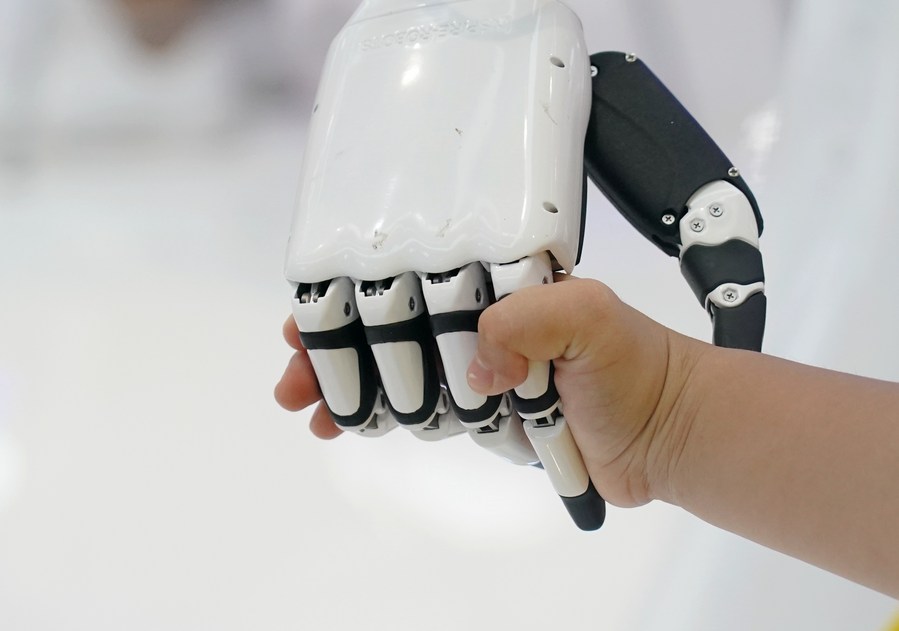Transitioning from follower to innovator

A child shakes hands with a robot during an expo of the World Robot Conference 2022 (WRC 2022) in Beijing, capital of China, Aug. 18, 2022. (Xinhua/Zhang Chenlin)
"Seeing robots as strategic high-end products, the world's major developed countries, such as the United States, Germany and Japan, have accelerated the push for research and development."
Tao explained that companies will be able to reduce production costs and improve product quality by replacing human workers with robots. And when it comes to social services, robots can perform tasks like unmanned delivery as well as cleaning and disinfection during COVID-19 outbreaks.
Over the past few years, the Chinese government has been ramping up efforts to promote the high-quality development of the robotics industry, taking solid steps such as formulating industrial plans, stimulating technological innovation, cultivating application scenarios and optimizing the business environment. After years of development, China has become the world's largest robot application market.
Data from the National Bureau of Statistics showed the country produced 366,000 industrial robots and 9.21 million service robots in 2021, up 68 percent and 49 percent year-on-year, respectively.
As of the end of 2021, the number of "little giant" robotics enterprises reached 101. In China, "little giants "are firms, typically small or medium-sized, that specialize in niches, command high market share and boast strong innovation capacity.
Xin Guobin, vice-minister of industry and information technology, told the World Robot Conference 2022 held in August in Beijing that industrial robots have already been adopted in 60 industries and 168 sub-industries. The intelligent manufacturing system with industrial robots at its core is playing an increasingly important role in driving the digital transformation of the manufacturing sector.